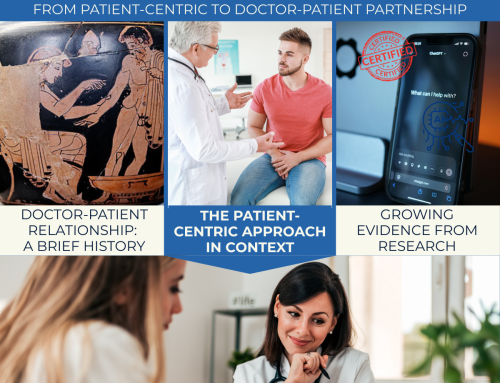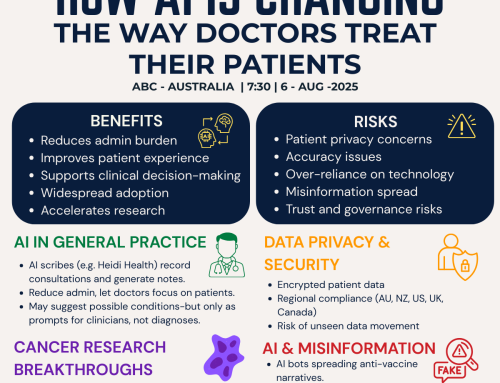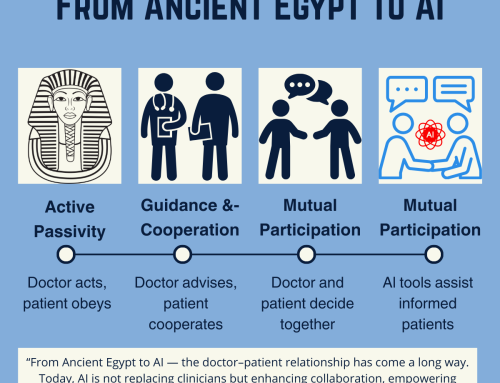Reimagining Healthcare
A Five-Stage Model for Transformation
Healthcare is at a crossroads. Emerging technologies, shifting patient expectations, and systemic inefficiencies are challenging the way we deliver care. While change is inevitable, how we respond to it will determine whether the future of healthcare becomes more patient-centered, efficient, and sustainable—or descends into further complexity and chaos.
To navigate this evolving landscape, I propose a Five-Step Model for Healthcare Transformation—a structured approach to redesigning healthcare systems with purpose, innovation, and long-term sustainability.
Each stage builds on the previous one, yet the process is not strictly linear; it is iterative, requiring ongoing reflection, adaptation, and leadership.
Let’s explore these five transformative phases.
go to: | Start | Top of This Section | End
1. Catalyst Model: Igniting Change in Healthcare
Technological advancements and systemic challenges are forcing change in healthcare delivery. From artificial intelligence (AI) in diagnostics to telemedicine and predictive analytics, the industry is undergoing rapid disruption.
But here’s the challenge: If we don’t address these disruptions methodically, they could add unnecessary complexity to an already intricate system, pushing it into chaos rather than improvement.
The Catalyst Model emphasises the need to:
Identify the forces driving change (e.g., new technologies, regulatory shifts, evolving patient demands).
Acknowledge that disruption is happening, whether we’re ready for it or not.
Take a proactive stance rather than reacting when problems escalate.
=> Challenge #1: Get clarity on what is causing the disruption.
go to: | Start | Top of This Section | End
2. New Frontier Model: The Power of Imaginative Innovation
The second stage urges us to embrace creativity and bold thinking to explore uncharted opportunities.
Technology doesn’t just disrupt—it enables new ways to improve healthcare for both patients and providers. But innovation must be intentional. If we let change happen organically without a clear vision, we risk losing control of its direction.
The New Frontier Model challenges us to:
- Encourage creative problem-solving to reimagine how healthcare is delivered.
- Think beyond the limitations of current healthcare models.
- Embrace calculated risks in adopting and integrating new technologies.
=> Challenge #2: Inspire a shared vision for change.
go to: | Start | Top of This Section | End
3. Thrive Model: Prioritising Well-Being for Patients and Caregivers
Technology alone won’t solve healthcare’s biggest challenges. At its core, healthcare is about people. Patients need compassionate care, and healthcare providers need sustainable working conditions.
A system that doesn’t support the well-being of caregivers will eventually fail to serve its patients.
The Thrive Model calls for:
- Aligning healthcare delivery with the well-being of both patients and caregivers.
- Designing systems that prevent provider burnout while enhancing patient care.
- Rebuilding trust in healthcare professions by prioritising human-centered approaches.
=> Challenge #3: Enable others to act by creating an environment where both patients and providers can thrive.
go to: | Start | Top of This Section | End
4. Sustainable Care Model: Optimising for Efficiency & Excellence
Once we establish a foundation of vision, creativity, and human-centered care, we must ensure that healthcare systems can scale efficiently without sacrificing quality.
The Sustainable Care Model focuses on:
- Streamlining healthcare operations to reduce inefficiencies and redundancies.
- Aligning processes and systems to optimise care delivery.
- Ensuring that improvements are not short-term fixes but sustainable solutions.
=> Challenge #4: Challenge the status quo and redesign inefficient systems.
go to: | Start | Top of This Section | End
5. Care Horizons Model: Building a Future-Ready Healthcare System
The final phase of transformation is reimagining healthcare with a futuristic, technology-enabled framework that ensures better care for all.
We must think beyond incremental improvements and ask:
- What will healthcare look like in 10, 20, or 50 years?
- How do we integrate AI, robotics, personalised medicine, and decentralised care?
- What models can exponentially improve patient outcomes and provider efficiency?
The Care Horizons Model helps us move from short-term fixes to long-term transformation by designing systems that can adapt to future advancements while staying rooted in patient-centered care.
=> Challenge #5: Encourage modeling the way for a better, future-ready healthcare system.
go to: | Start | Top of This Section | End
A Call to Action: Will You Lead the Change?
This five-phase approach isn’t just theoretical—it’s a blueprint for action.
If you’re a doctor, nurse, healthcare advisor, or industry leader, your role is crucial in shaping the future of healthcare. Transformation isn’t easy, but by embracing visionary leadership, innovation, and systemic optimisation, we can build a healthcare system that truly serves everyone.
Are you ready to take action ?
Here’s how you can begin:
- 1
Gain clarity on what’s disrupting your healthcare system.
- 2
Inspire a shared vision among your peers and leadership teams.
- 3
Enable others to act by adopting and advocating for positive change.
- 4
Challenge the status quo to eliminate inefficiencies and outdated systems.
- 5
Model the way forward with bold, future-focused thinking.
As part of this journey, we invite healthcare professionals who are committed to reshaping healthcare to explore and contribute to our proposed frameworks. Together, we can develop practical, actionable solutions that will transform our systems into more equitable, accessible, and responsive models of care.
If this resonates with you, we invite you to take the next step:
go to: | Start | Top of This Section | End






Leave A Comment